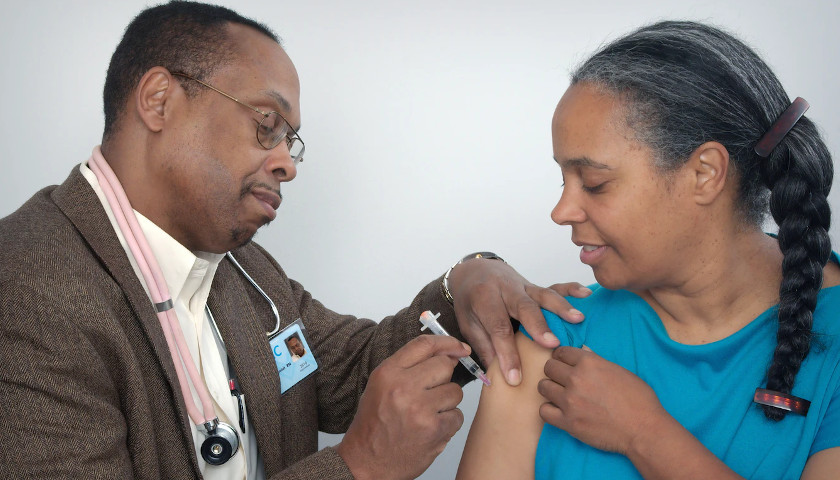Virginia’s Health Equity Leadership Taskforce created two new dashboards displaying equity data in a style similar to pandemic metric dashboards. The dashboards display data on current conditions in Virginia and on mitigation efforts.
“The pandemic has placed a spotlight on longstanding health inequities and the harm caused by structural racism,” Governor Ralph Northam said in an announcement Tuesday. “Virginia continues to embed equity into every part of our COVID-19 response and recovery and while we have made great strides, there is still important work to be done. These dashboards will bring additional visibility to our most pressing challenges, allowing the Commonwealth to better serve vulnerable populations and ensure the equitable distribution of resources.”
The Equity at a Glance dashboard, run by the Virginia Department of Health, is focused on Virginia’s ranking on indicators like income, people who graduate high school, food access, unemployment, broadband access, and housing insecurity. For example, Virginia ranks 10th in the nation for income and poverty, with 10.6 percent of the population in poverty. Virginia is 25th in housing insecurity, with 12.5 percent of households spending over half of their income on housing.
The Equity in Action dashboard, run by the Office of Diversity, Equity, and Inclusion, is focused on actions Virginia has taken. The dashboard measures distribution of protective personal equipment, Medicaid expansion, unemployment benefits, food distribution, and funding for small businesses in low-income communities. For example, since March 2020, Virginia has served 115.6 million meals and since August the Virginia Rebuild Fund has funded 1,313 small businesses in low-income communities.
Virginia’s Chief Diversity Officer Dr. Janice Underwood said in the release, “The launch of these two dashboards reinforces Virginia’s leadership position, highlights the equity work being done across the Commonwealth, and serves as a call to action in closing gaps and improving the health and well-being of all Virginians.”
The dashboards are part of the state’s response to HJR 537, passed by the 2021 General Assembly, and to a section of Virginia code creating the administration position the Director of Diversity, Equity, and Inclusion.
Delegate Lashrecse Aird (D-Chesterfield) introduced the resolution. In January, she told the Rules Committee, “More than 100 studies link racism to negative outcomes. That impacts Virginian’s lives by way of their life expectancy, their quality of life, food security mental health, housing, education, you name it.”
She said, “House Joint Resolution 537 would formally take the step of declaring racism a public health crisis in the Commonwealth of Virginia. In addition, this resolution would take numerous steps to address systemic racism and its impact on public health and those are outlined as well.”
Delegate Carrie Coyner (R-Chesterfield) is the only Republican who voted in favor of the bill in the House of Delegates; several Republicans did not vote. The Senate passed the bill through a voice vote and did not take a roll call.
In Northam’s announcement, State Health Commissioner Dr. Norman Oliver said, “These dashboards enable the Virginia Department of Health and other leaders to get the information we need to confront inequity across social determinants of health.”
Heritage Foundation Senior Research Fellow Robert Rector said the indicators in the Equity at a Glance dashboard are indicators correlated to poverty.
He said, “I think that they’re misleading because they are simply numbers without an explanation of why the difference occurs, and the resolution itself more or less says that this is because of systemic racism, and I’m saying, that’s just simply not true.”
Rector argued that poverty correlates to single-family homes, parents who spend a lot of time unemployed, and education level. Both white and Black communities struggle with poverty caused by those things.
“It’s absolutely the family structure that’s driving that. The sad reality is that over the last fifty years or so, the Black family in the United States fell apart,” he said.
According to Rector, that shows that systemic racism can’t be driving the problem, since systemic racism should have been improving thanks to the civil rights movement and the growth of welfare programs.
Instead, Rector said that collapse is linked to welfare policy that is incentivizing broken families with “marriage penalties” that mean families lose benefits if both parents are in the home. He said welfare programs need to be designed differently.
“You can have a generous welfare system as long as the welfare system is not discouraging or displacing work and marriage,” he said.
Rector said, “You just can’t look at these disparities and say, ‘Whoops, systemic racism.’ You have to look and say, ‘Well actually, why has this disparity occurred?’ And then you have to address the actual behaviors that lead to the disparity in the first place.”
While speaking to the Rules Committee in January, Underwood described a different source of the problem. She said, “It should be noted that these issues have long plagued our state and nation as a result of slavery, unlawful Jim Crow laws, and de facto segregationists.”
She said, “But these and so many other symptoms of racism, a public health crisis, now much more nebulous, more like James Crow Esquire I usually say, became undeniable in the current twin pandemic of COVID-19 and racial injustice where we all witnessed the disparate impacts of racism in the coronavirus on our people of color.”
– –
Eric Burk is a reporter at The Virginia Star and the Star News Digital Network. Email tips to [email protected].





